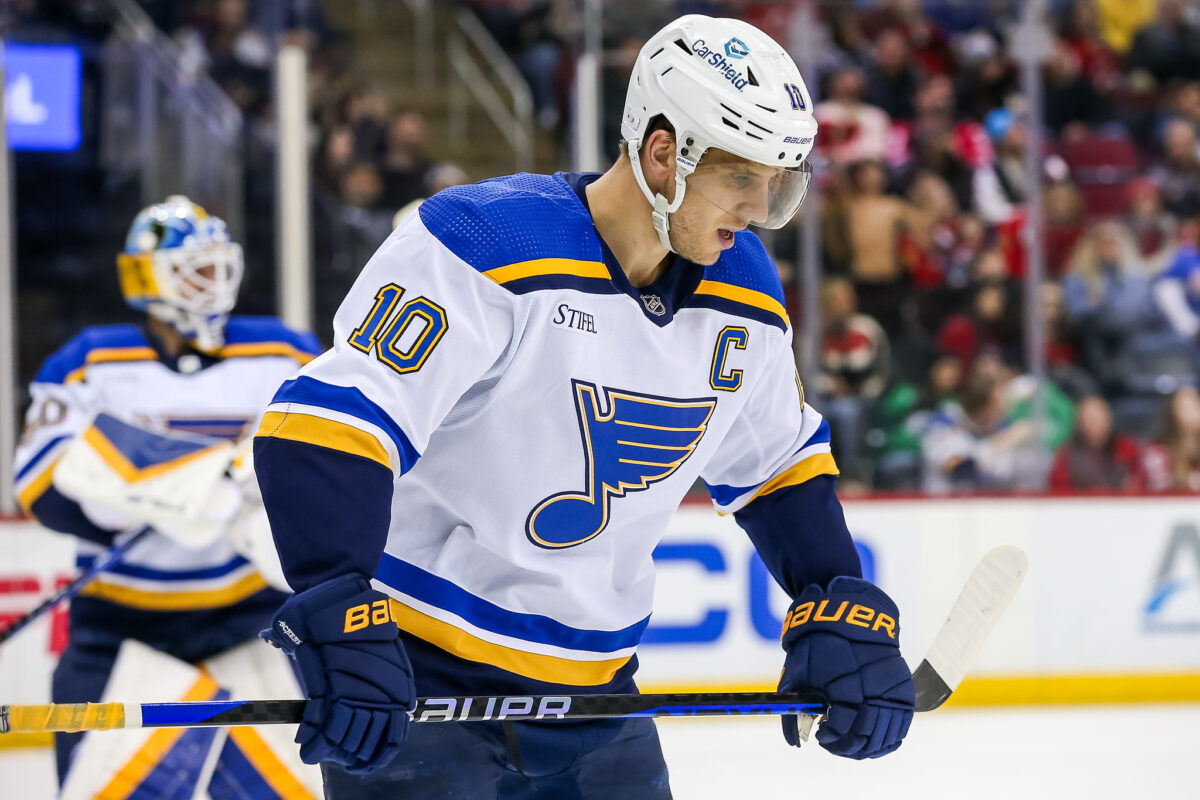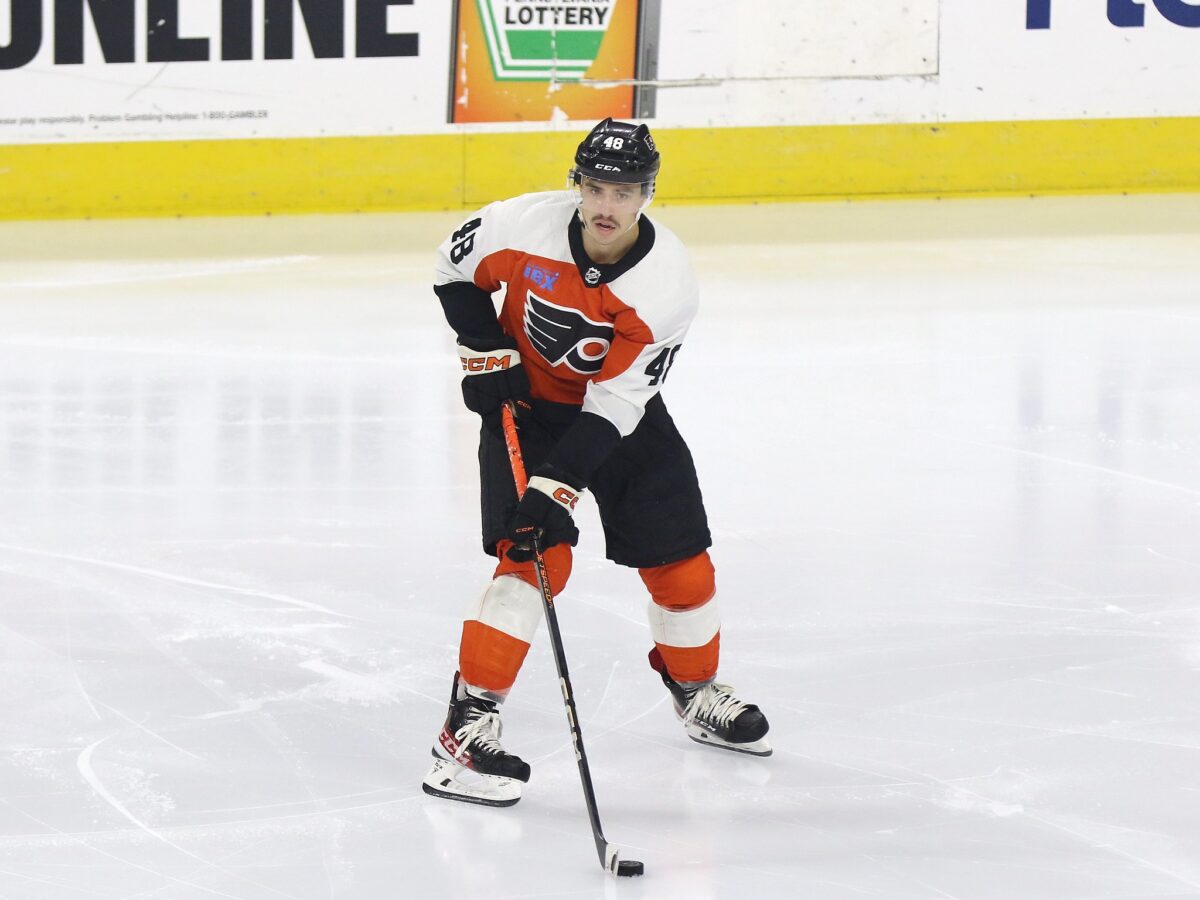Trade analysis can often be one-sided. Usually, the team that reaps the immediate benefit from a trade is viewed as the winner, whereas the team that has to wait for the rewards are considered the loser. That seemed to be the case early on in the aftermath of the 2017 NHL Draft Day trade of Brayden Schenn to the St. Louis Blues. Schenn has made a permanent home in St. Louis and has won a Stanley Cup.
Clearly, the Blues have no regrets about this trade. But a fair analysis of the young prospects (via draft picks) the Philadelphia Flyers got in return suggests that this trade is about as even as it gets, and could, in the long run, be viewed as one of the better moves in Flyers’ franchise history.
Why Schenn Had to Go
Every trade has a story, and the Schenn story began with the Flyers unexpectedly rising to the second-overall pick in the 2017 NHL Draft Lottery. Then Flyers general manager Ron Hextall had no idea he was going to obtain that pick. Once he had it, he knew he was going to select Nico Hischier or Nolan Patrick (both centers). Therefore, he knew he would have too many players down the middle. Schenn is a natural center but played on the wing most of the time due to the logjam of centers in the Philadelphia system. Trading him gave head coach Dave Hakstol the option to move one of Claude Giroux, Valtteri Filppula or Jori Lehtera to the wing, which worked out well for Giroux.
Now that they didn’t have to worry about playing Schenn in his natural position, they could easily roll with Couturier, Filppula, and Patrick as their top three centers, or so they hoped, before Patrick struggled with concussions during the first several seasons of his career.

For the Blues, they were looking to add someone who could take on the role of a first-line center. While he was never given that opportunity in Philadelphia, he did manage to produce on the wing with some talented players. Knowing he could be slotted between Jaden Schwartz and Vladimir Tarasenko, Blues general manager Doug Armstrong knew Schenn could step in as the center. He pulled the trigger on the deal but gave up a lot in the process.
Evaluating the Blues’ Return
This deal had two major rewards for the Blues. Schenn was obviously the big piece, but they were also able to unload a troublesome contract in Lehtera. The Blues had signed Lehtera to a three-year, $14.1 million contract extension after just one season in the NHL, and it already looked putrid by the time of the trade. The Flyers were in a better position to bury the contract away from prying eyes, and since they could leverage it to increase their return in the deal, they happily accepted it.
You may also like:
- 3 Things the St. Louis Blues Did Right in 2023-24
- NHL Rumors: Ducks, Maple Leafs, Blues, Canadiens
- Schenn Disappoints in First Season as Blues’ Captain
- Blues & Coyotes Can Be Trade Partners Over 2024 Offseason
- 3 Reasons the St. Louis Blues Missed the 2024 Playoffs
Of course, Schenn was the major prize for the Blues, and he has become a sensational addition to the team. He became their best player in his first season, managing a career-high 70 points in 82 games. While he has not maintained quite that level of output, he has remained a fixture in the Blues’ top-six. He struggled some in their deep playoff run, but still had 12 points and played in all 26 games as the team went on to win its first-ever Stanley Cup.

Schenn earned his teammates’ respect and the confidence of his new general manager. Early in the 2019-20 season, he inked an eight-year, $52 million contract extension to remain with the team until presumably the end of his career. He is also the team’s captain and remains a fan favorite. The Blues gave up a haul to get Schenn, but they certainly have no regrets.
The Flyers’ Future Set with Frost and Farabee
In exchange for Schenn and the contract of Lehtera, the Flyers secured their future. They grabbed two first-round picks from the Blues, a huge haul in the modern-day NHL. And with them, they selected Morgan Frost (27th overall, 2017) of the Sault Ste. Marie Greyhounds and Joel Farabee (14th overall, 2018) of the U.S. National Team Development Program.
It is still early in the two players’ careers, but it looks like both could be long-term contributors in Philadelphia. Frost was a dominant player in the Ontario Hockey League (OHL) with the Greyhounds, scoring 112 and 109 points in his last two seasons, along with 29 and 18 playoff points. He broke out in 2022-23 with 46 points in 81 games.

Farabee, on the other hand, looks like an NHL star in the making. After his draft, he played one standout season with Boston University. He also helped the U.S. secure a silver medal in the World Junior Championship. From there, he was destined for almost immediate NHL playing time. Debuting in the 2019-20 season, Farabee managed 21 points in 52 games. After four-plus seasons in the NHL, he’s accumulated 177 points in 317 games.
Blues and Flyers Both Benefit
In the final analysis, then, this deal can only be described as a true win-win hockey trade. The Flyers were in a position where they had a strength to trade from, and they made the most of it. By accepting a bad contract back, they were able to secure two first-round picks, and both Frost and Farabee look to have bright NHL futures. Though they paid a hefty price, the Blues won’t be regretting this trade anytime soon, either. Schenn has been a fixture in their top-six, and it’s hard to imagine their 2019 Stanley Cup run happening without him. He now looks to remain with the team for the rest of his career. It’s a good deal for both teams, and one that shaped the future of both franchises.
